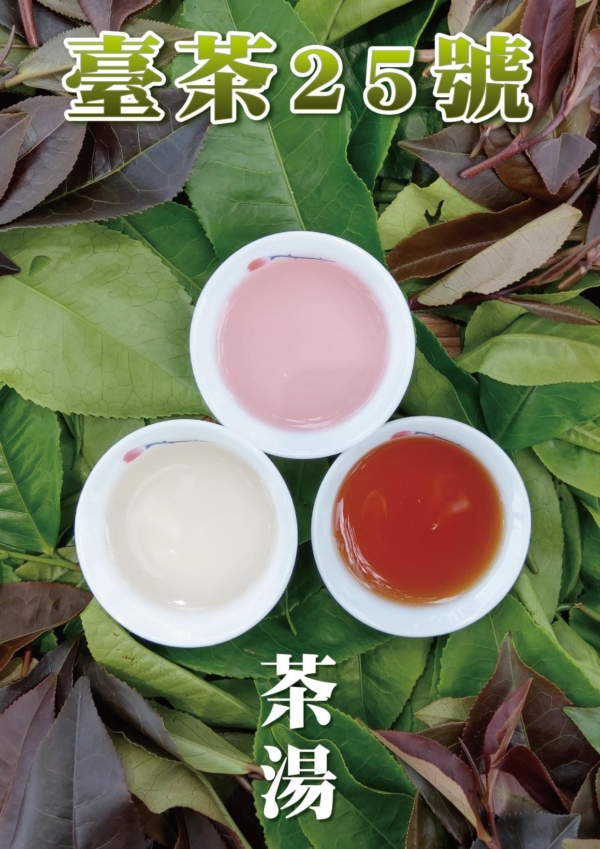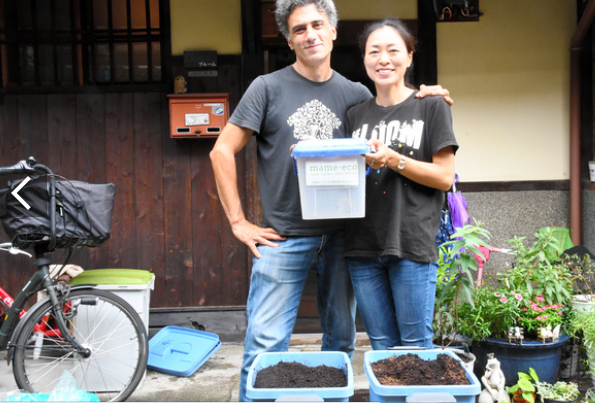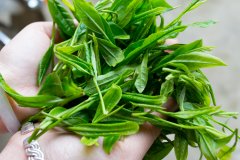What is purple tea, black tea? A New Variety of Taiwan Black Tea Ziyantai Tea No. 25 Taste Characteristics
"purplish red tea, add lemon will change color." The tea is light green with a purple background, the color is slightly dark, and the content of anthocyanin is 50 times higher than that of the popular Taiwan tea No. 18 red jade. Consanguinity mother: Myanmar big leaf species (Burma) father: Taiwan tea No. 13 (Cuiyu) suitability: green tea, black tea black tea dark red, Hawthorn color, officially said to have elegant orchid fragrance, taste glycolic mild; green tea soup is "low saturation green", applied to hand drinks can show colorful changes, can satisfy both the industry and consumers. The pink and purple tea instantly turns into a bright and charming pink after adding lemon juice, and the mineral water of alkaline substances and alkaline bubbles will turn green, which has the potential to develop new tea products such as hand drinks, so the variability value of making green tea is the highest. the effect of anthocyanin change is the most obvious.

The characteristic strain of the variety is fish pond. Among the natural hybrid descendants of Burmese species (Burma), it was found that the red bud leaves were very novel and distinguishable, and then the follow-up fine strain breeding was carried out. The new strain 84-91-3-2 with rich purplish red tea buds was named and passed.
The first named purple bud tea variety in Taiwan
The shoots of dried tea are thick and gray.
The leaf surface is waxy and reflective.
The buds and leaves of three to four leaves in one core are all purplish red in four seasons.
The purplish red bud leaves can be maintained for nearly a month.
It can be applied to garden landscaping and landscape cultivation.
The yield is good (3400 to 3940 kg / ha)
Strong growth potential, resistance to diseases and insect pests and good drought tolerance
Manual harvesting is feasible, and the average annual output is estimated to be four tons in the future.
It is also suitable for mechanical harvesting, and it is predicted that it can produce eight tons a year.
The drinks are colorful and diversified, which meets the needs of the market for innovation and change.
The value of health care function is improved: the anthocyanin content of purplish red bud leaves is more than 50 times higher than that of green bud leaves of general tea varieties.
At the same time, new tea varieties with multiple uses, such as "agricultural production", "horticultural landscape", "multi-application of tea" and "raw materials for food processing", are suitable for planting in Nantou area, such as fish ponds and famous plants, and tea seedlings are expected to be on the market by the end of 2023. The leaf vein angle of tender tea is close to 90 degrees from the leaf tip, the closer the leaf tail angle is, the smaller the leaf tail angle is, and the more mature the leaf vein is, the more mature the leaf veins tend to be 90 degrees. Since 1995, it has taken more than 20 years to devote research manpower and resources to the selection of new tea strains. The name was adopted on April 26, 2021, and the Chinese name was announced in the annual celebration.
Important Notice :
前街咖啡 FrontStreet Coffee has moved to new addredd:
FrontStreet Coffee Address: 315,Donghua East Road,GuangZhou
Tel:020 38364473
- Prev

A couple in Japan receive a ton of coffee grounds a month for the wonderful use of agricultural fertilizer to turn waste into treasure.
Surfing the Internet, I suddenly saw a piece of news [A couple in Kyoto collected coffee grounds by bike and collected 1 ton a month.
- Next

What is the difference between authentic qimen haoya and qimen maofeng? Where to buy A and B?
In China, tea drinkers always like to judge whether the tea they drink is genuine. What is truth? Why do some Chinese teas taste so much better than others? For many Western tea drinkers, the concept of authenticity is foreign. Quality is quality. Does it really matter where you give birth? yes, indeed. After all, tea is a by-product of soil, water, air and sunlight
Related
- Brazilian coffee yellow bourbon brewed flavor characteristics and origin share! What grade is red bourbon coffee?
- How to judge the roasting degree/concentration/filtration method of coffee beans from the color of coffee soup? What is the difference between dark and light roast coffee?
- Why are the coffee in some coffee shops not enough after being frozen? What should I make up for my American latte cappuccino coffee after being frozen?
- How much water does it take to steam coffee by hand? Why is the coffee brewing and steaming time 30 seconds? What is the purpose of steaming coffee?
- The suspected drink contains too much caffeine! Overlord Tea Lady responds urgently!
- Starbucks rejects antique paper coupons?! Netizen: Missed marketing opportunities!
- What ratio of water temperature and ground does the smart cup method use to press coffee? The difference between brewed coffee and filtered coffee?
- What is the standard process for the purpose of coffee cup testing? What is the difference between hand-brewed coffee and cup testing?
- How to use hand-brewed coffee paragon small golden balls? How does cold coffee lock in the aroma of coffee?
- Is American coffee black? What is the difference between American coffee and drip coffee?

